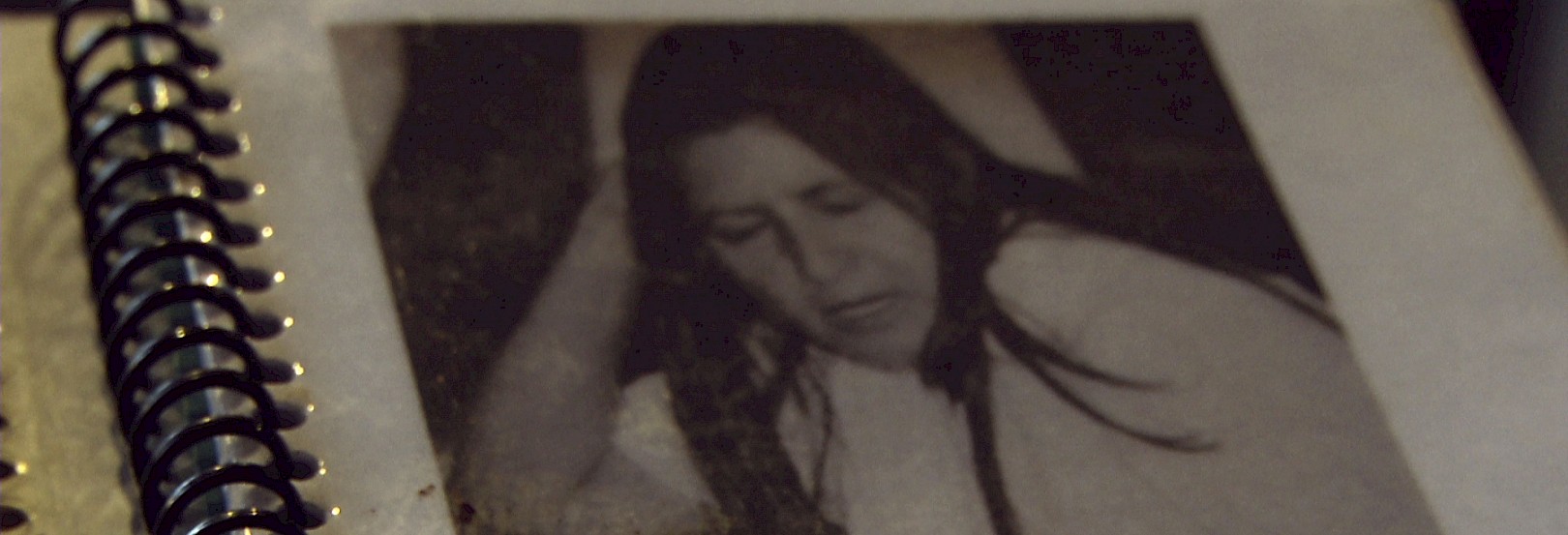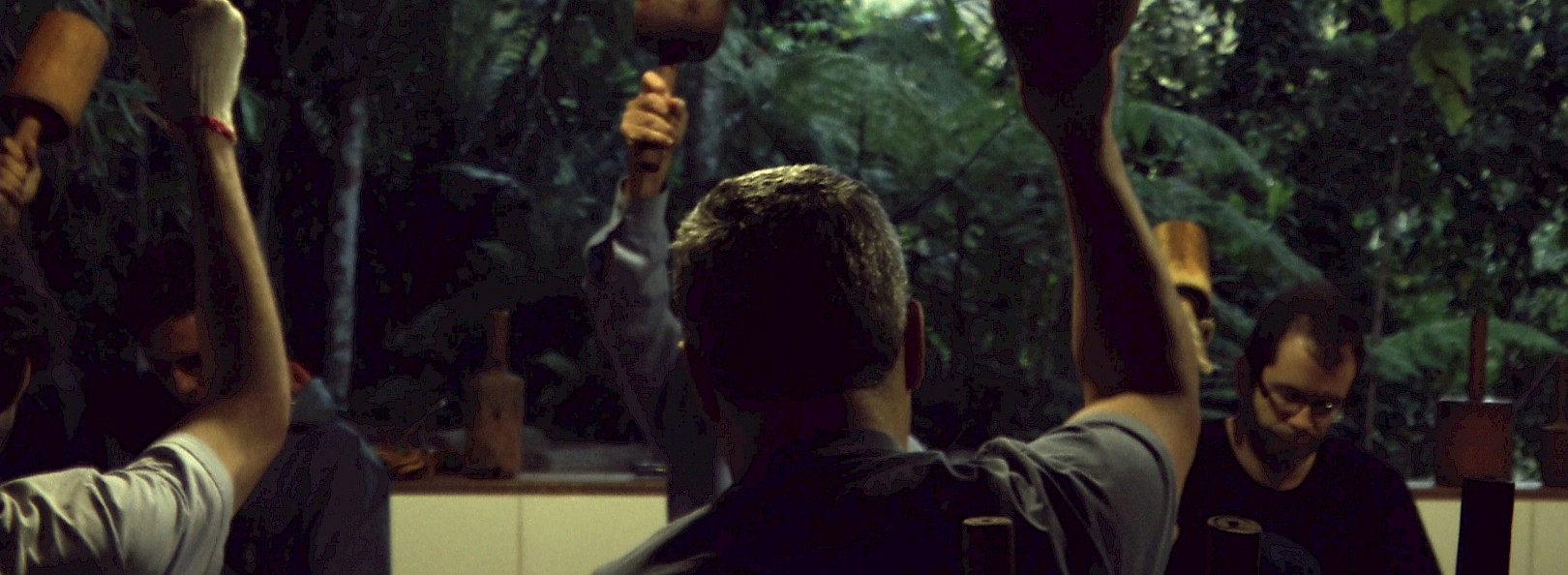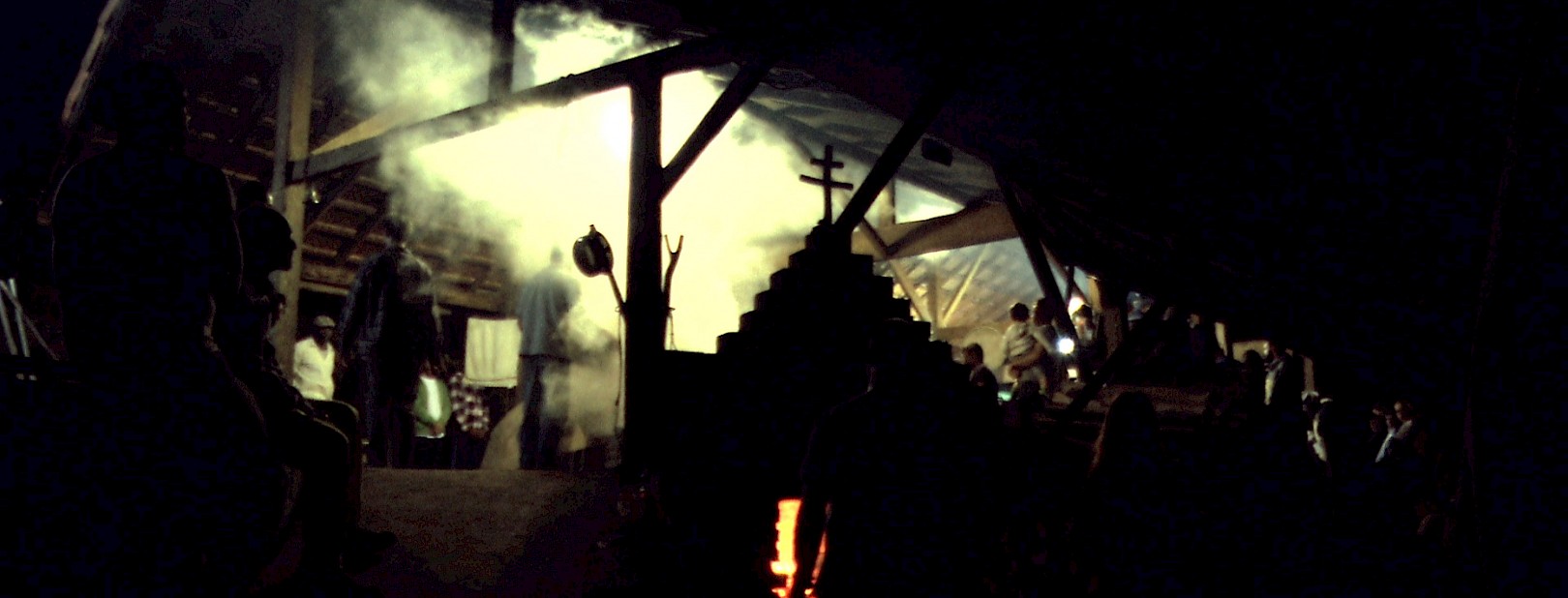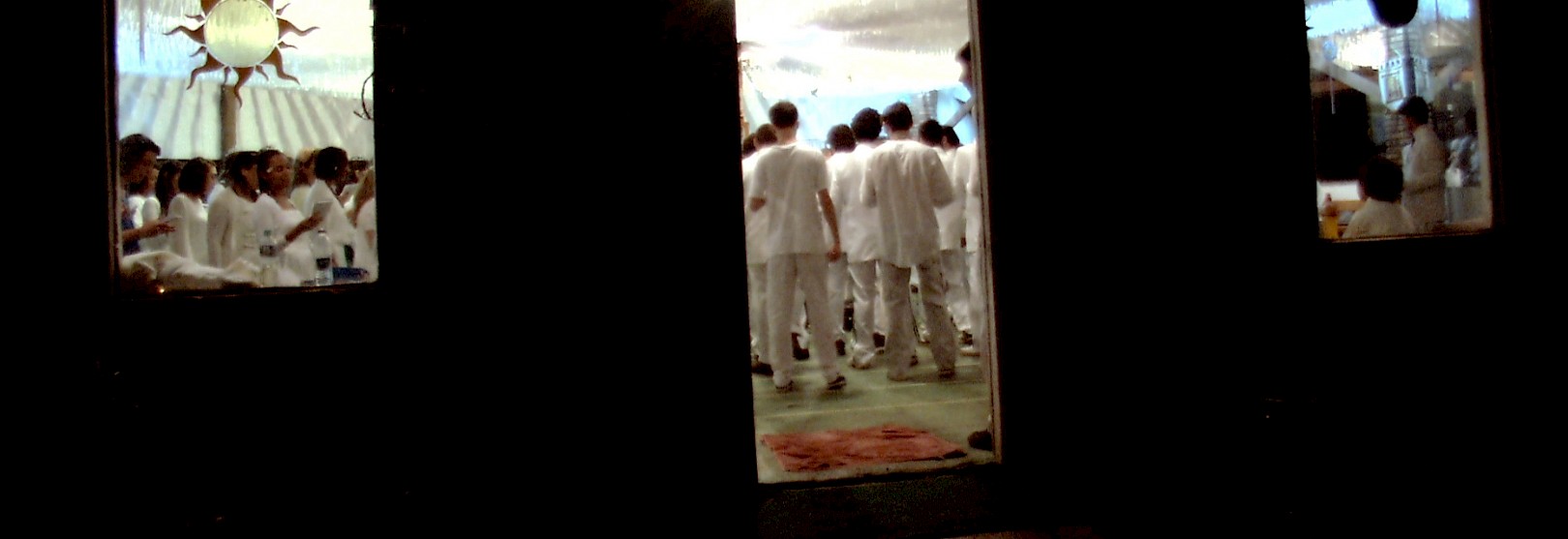Album
Flor da Montanha
This is a lesson on inclusion: cooperation, respect. A lesson on approximating and exchanging with different worlds. In these times of rupture, there are still places where names don’t matter; there’s more worth in opening up to life’s truths and to the strength that resides in believing.

Flor da Montanha is an address in the city of Nova Friburgo, located in the hinterlands of Rio de Janeiro state. It’s a subdivision with houses, a temple, a church, a community. It is the songs from the Africas in Brazil, an Amazonian scent in southeastern Brazil. It is Umbanda and it is also Santo Daime.
In the lineage of Padrinho Sebastião – who was born in Acre state and studied under Mestre Irineu and founded Cefluris (Centro Eclético da Fluente Luz Universal Raimundo Irineu Serra) after his teacher’s passing – was the first Daime branch to reach Rio de Janeiro, in 1982. Around this time, when Daime communities were sprouting across the state, that Mãe de Santo Baixinha came to know about Daime and Sebastião. She helped Padrinho heal from a disease thanks to her knowledge of herbs, and thus started the approximation between both of their beliefs and everything they represent.
"When the Daime arrives
It is for all of us to take
And thank God
What he has to give us "
Hymnal sung during the Feitio ceremony at Tenda Espírita Flor da Montanha

Known for her faith, Mãe Baixinha had, amongst other characteristics, the desire to let spirituality flow naturally in rituals and ceremonies: she respected and maintained the fundamental aspects, but she was also open to all the tools that she would come across. And with that in mind, she built her own way of practicing Umbanda and performing Daime works.

“I trust the Sun
I trust the Moon
I trust my Master
He holds the power
Step by step
I follow my destiny
With the forces of the divine
I shall overcome it all”
Chico Corrente’s Hymnal
Flor da Montanha is a reflection of this lifestyle chosen by its Spiritual Leader: with natural ease, the tent covers the celebrations in the CEFLURIS calendar, an official document that determines the saints and festivities for each day, as well as the giras. Common ground for all rituals, the power of music echoes through the space.

The Feitio is one of the main rituals at Flor da Montanha: it takes twelve hours of devotion and thorough repetition to prepare the Ayahuasca. In order to take part in the process, one has to abstain from sexual relations, alcoholic beverages, and foods such as beef: discipline is important to ensure harmony and self-control in face of all the emotions released upon contact with the tea. Vines and leaves are picked, men macerate the vine to the rhythm of the hymns they sing, women select and clean the leaves. Deep pots hold the vegetables that simmer for hours on end: out of the pots and into the jugs, the job is done. In the evening, the group gathers to celebrate and thank for the Daime.
“One needs to put in the work
to be allowed into the celestial hall”
Hymnal sung during the Feitio ceremony at Tenda Espírita Flor da Montanha

Some of the other ceremonies are: Hymnals, Concentration, Mass to the Deceased, and Healing Works. During Hymnals, the central doctrine hymnals are repeated by the group and dictate the pace for the dances and visions: according to the lyrics, Umbanda entities dance and meet with forest creatures and Catholic saints. One of the main Hymnals takes place over New Year’s Eve, a celebration to Mãe Baixinha’s legacy.
Concentration is a ceremony carried out in silence, with the purpose of meditating to allow for spiritual development: they read from the gospel and discretely sing. In the Mass for the Deceased, ten of Mestre Irineu’s hymns are sung: quietude is respected, so there aren’t any dances or musical instruments. The healing Works offer an opportunity to pray for the sick as some possessions take place.

The giras for adults and girinhas for children are moments of connection between the earthly and the Sacred enabled by music under the presence of Umbanda’s entities. These are sort of musical meetings; some are open to the public, others are internal, for the community’s own evolution.
“The ritual is the scenario in which a play takes place, but the essence of this play is spiritual”
Marcelo Bernardes, General Coordinator at Flor da Montanha

At each of these meetings, defining where a line starts and another ends isn’t what matters. By following the teachings left by Mãe Baixinha’s hands and voice, this quilt of faiths opens up spaces and makes way for that which is truthful and natural. Among these Hymnals and works, there’s a thread that follows this sweet and firm woman who aligns intentions toward the same direction.
interview
Marcelo Bernardes
21:09
interview
Nilton Caparelli
08:27
interview
Armando Gomes
06:20
interview
Taynã Fontes
07:52
ritual
Flor da Montanha (Feitio)
23:55
ritual
Flor da Montanha (New Year's Ritual)
23:31
outtake
Flor da Montanha (Girinha)
07:55
